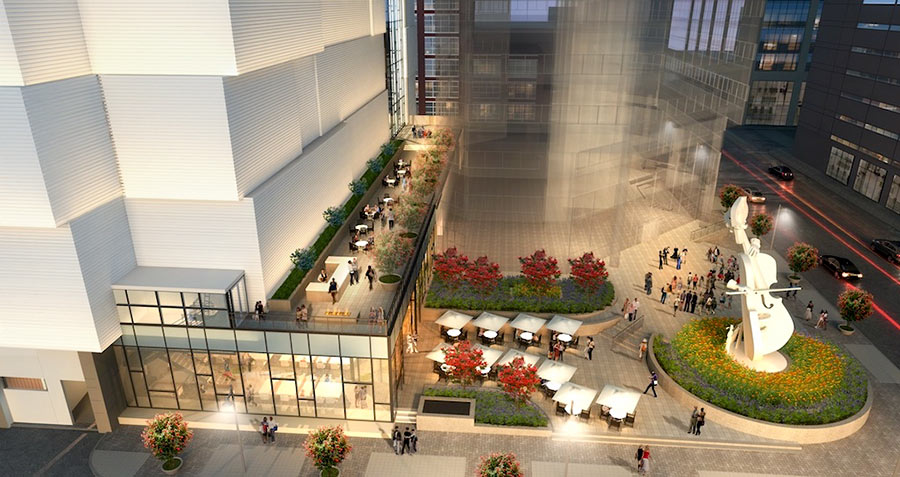
Number 4 on the list of Downtown food halls, one of which has actually been built: Lyric Market, a 31,000-sq.-ft. multi-restaurant space that plans to move in just north of the Lyric Centre on Louisiana St. Houston’s first food hall, Conservatory, opened 5 blocks east on Prairie St. last year. Both Bravery Chef Hall and Finn Hall are expected to open within the same 7-block sector of downtown as Lyric Market.
Work to build the blocky white parking garage shown above began on the site of a surface parking lot last October. The structure’s street level, allocated to retail, will now be occupied entirely by Lyric Market. The food hall will span Preston St. between Smith and Louisiana and connect directly to the adjacent Lyric Centre, shown looking ghostly in the rendering above. A new plaza with outdoor seating will go between the end of the food hall and David Adickes’s self-playing-cello sculpture at the corner of Smith and Prairie streets.
The floor plan below shows how the restaurants will lay out:


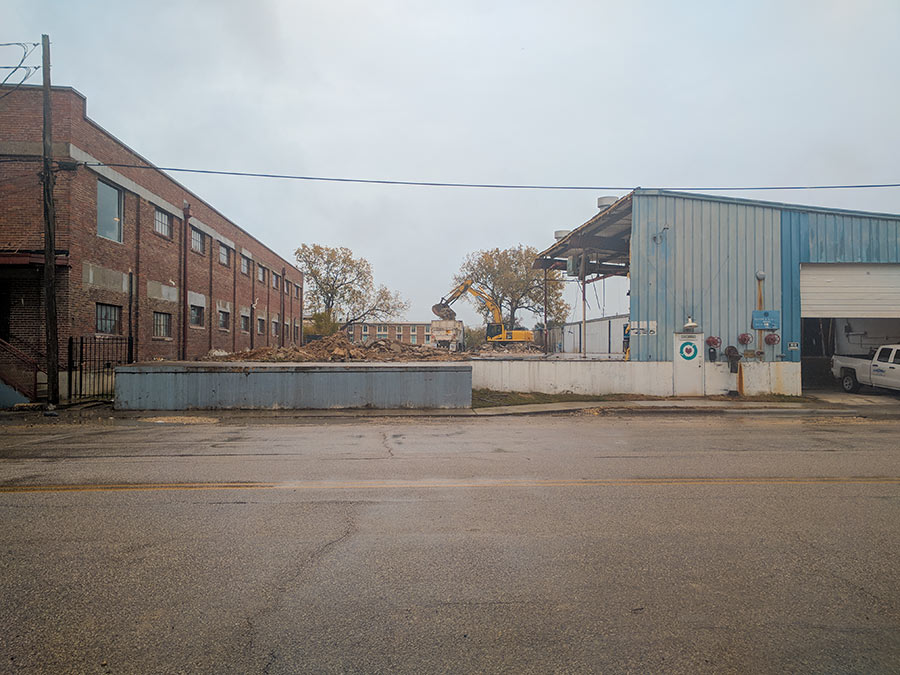
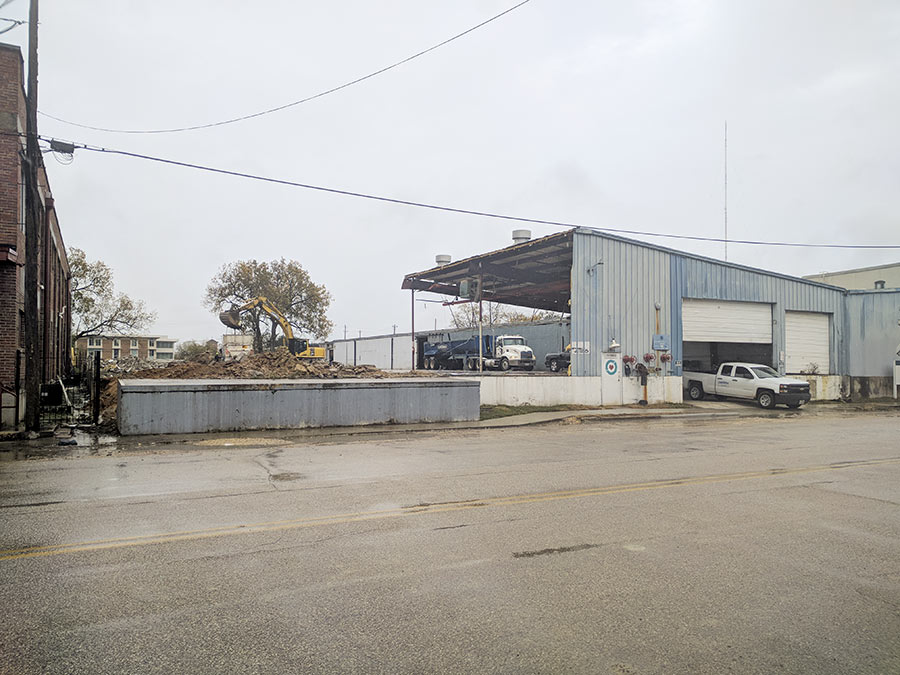
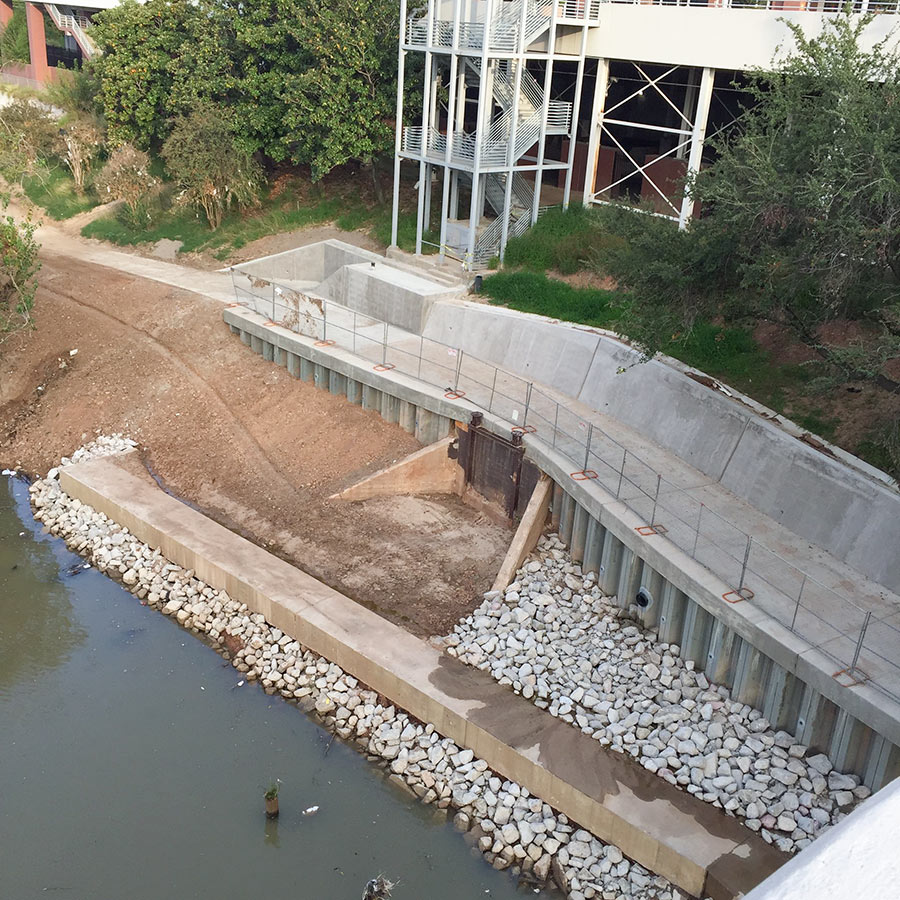
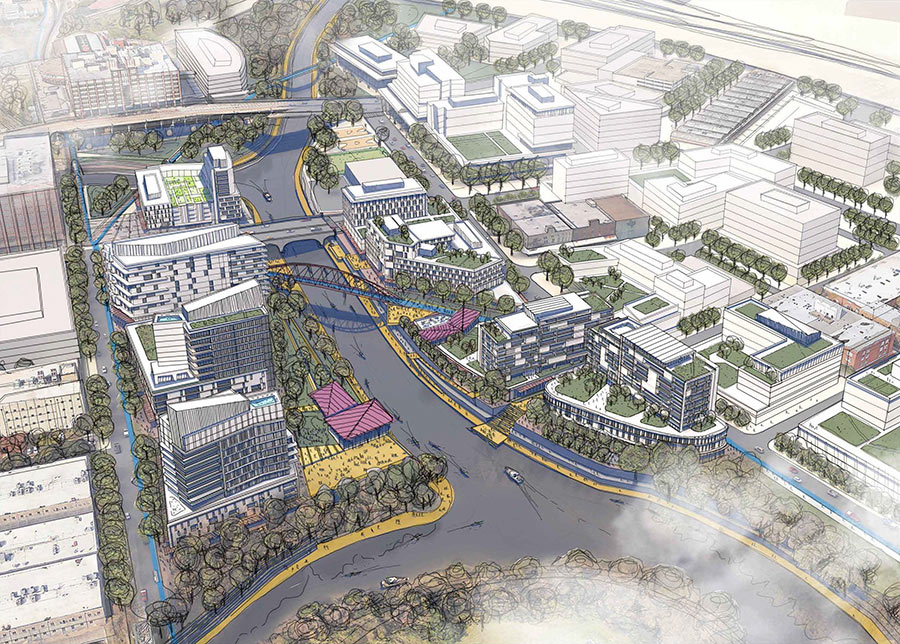
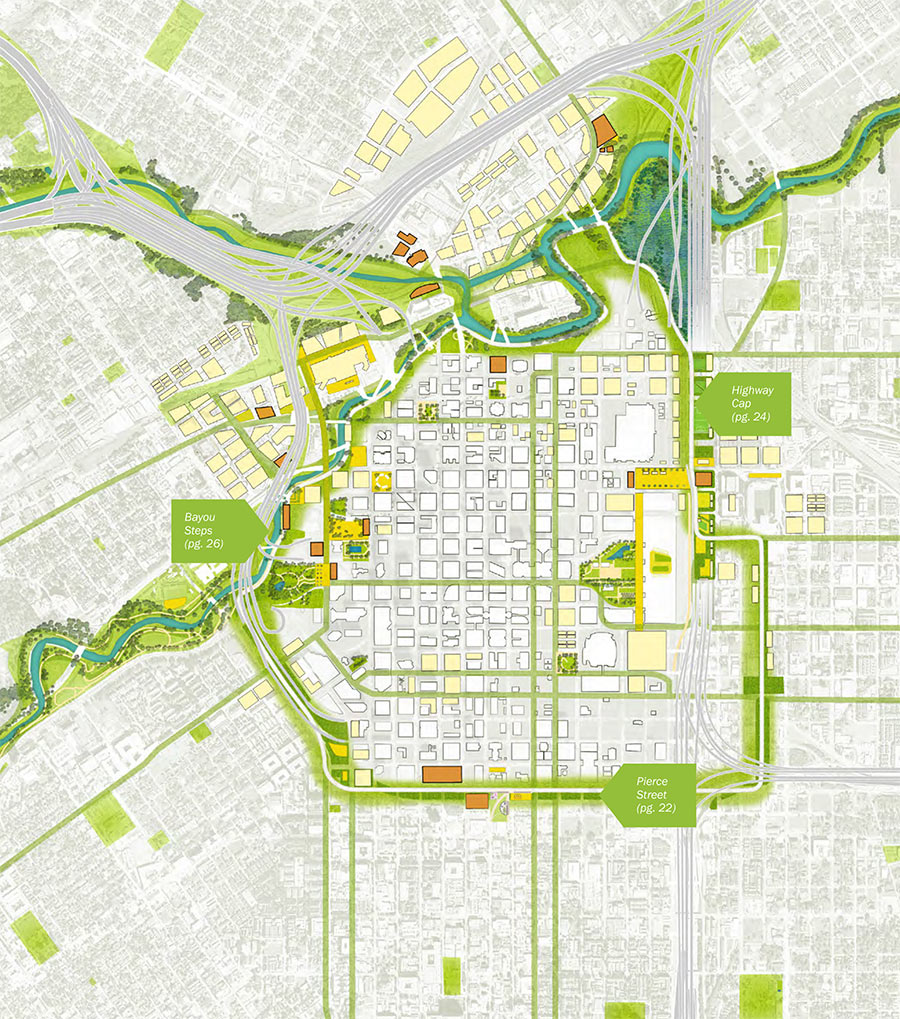
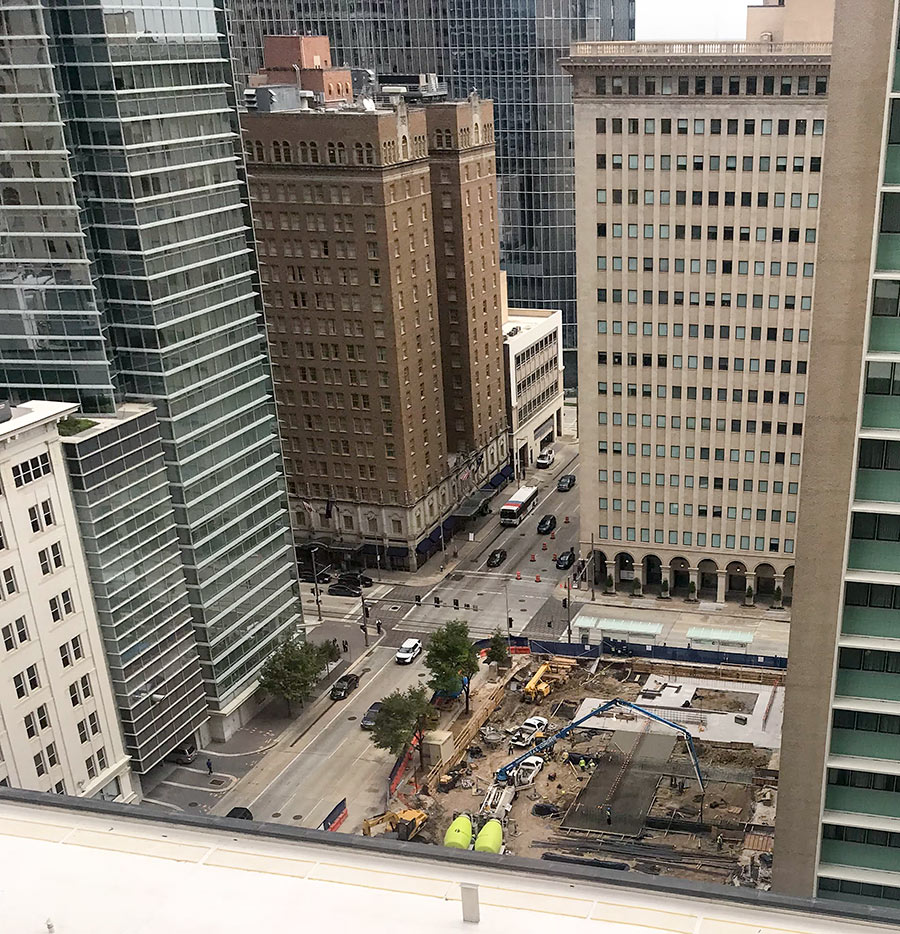
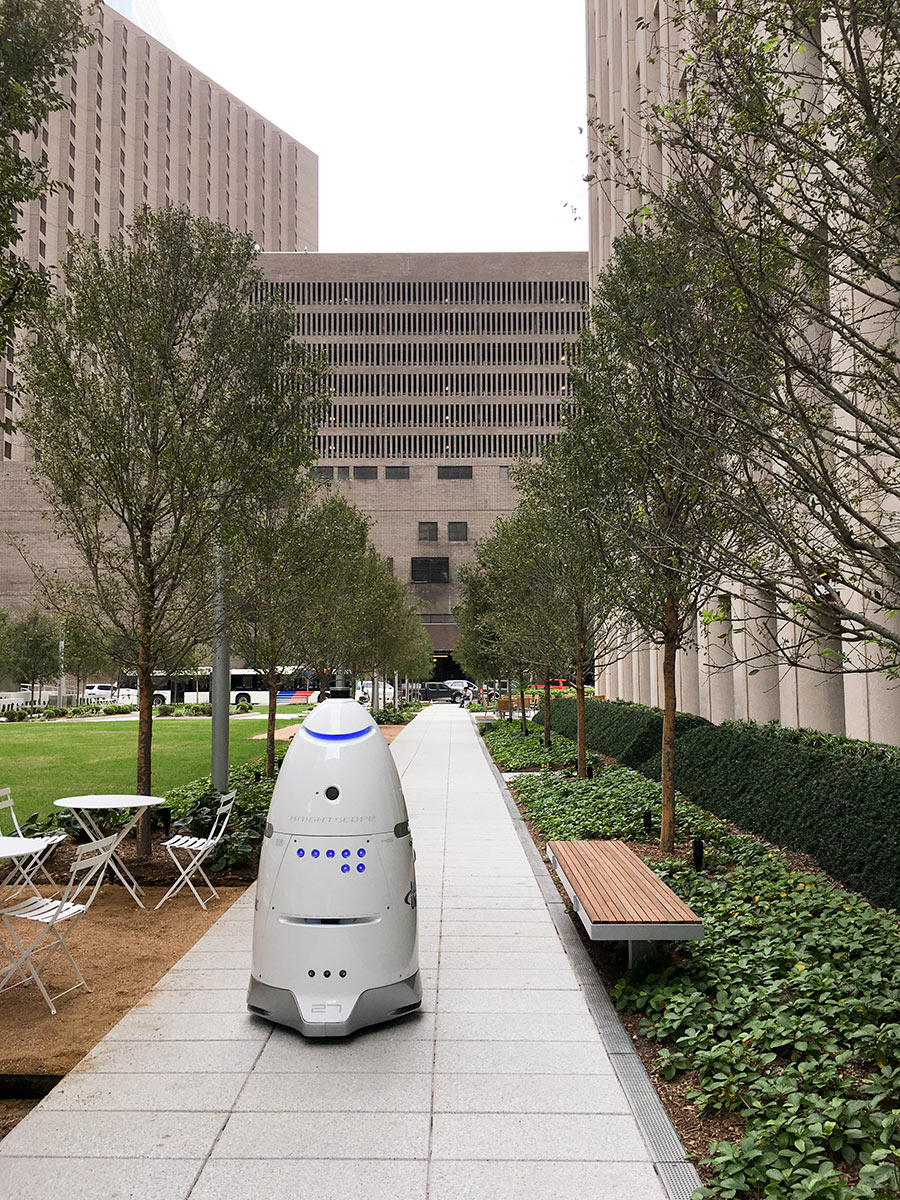
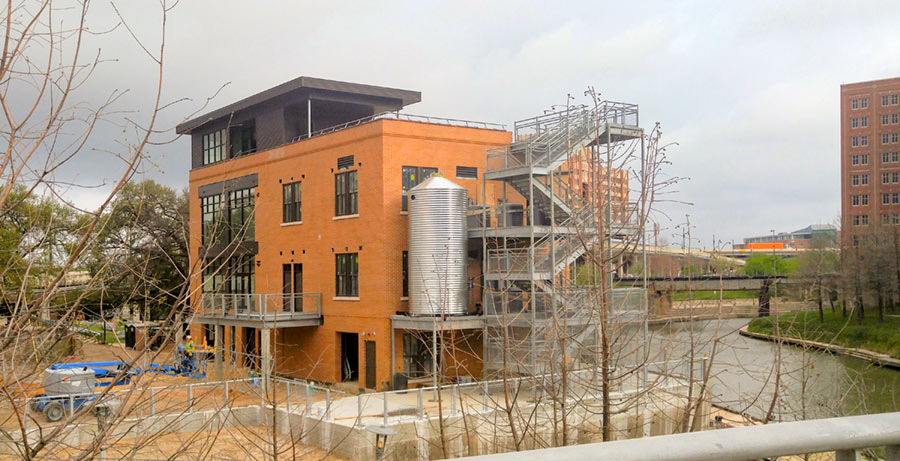 Talk about timing: The Rice Design Alliance’s annual home tour
Talk about timing: The Rice Design Alliance’s annual home tour 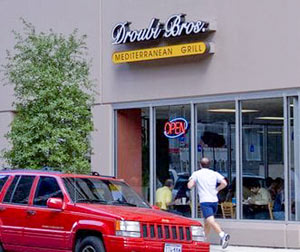
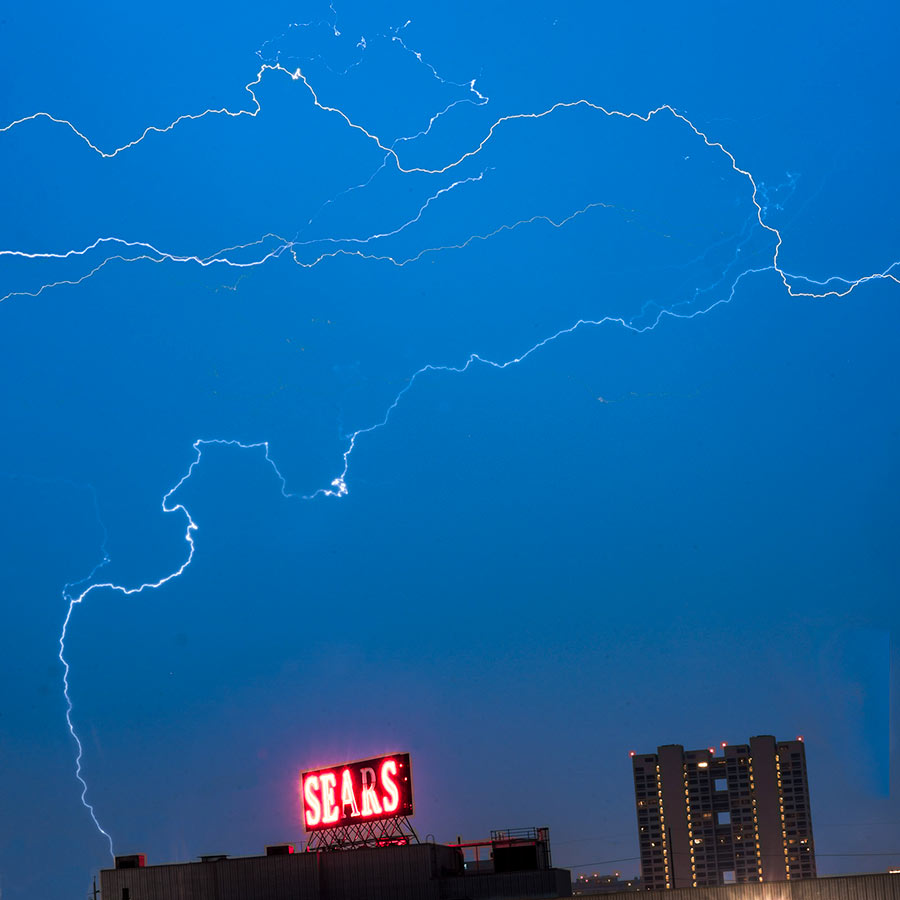 The company that manages Rice University’s $5.3 billion endowment last week bought out the 28 years remaining on a 99-year lease the university had signed with the Sears department store on its Midtown property back in 1945.
The company that manages Rice University’s $5.3 billion endowment last week bought out the 28 years remaining on a 99-year lease the university had signed with the Sears department store on its Midtown property back in 1945. 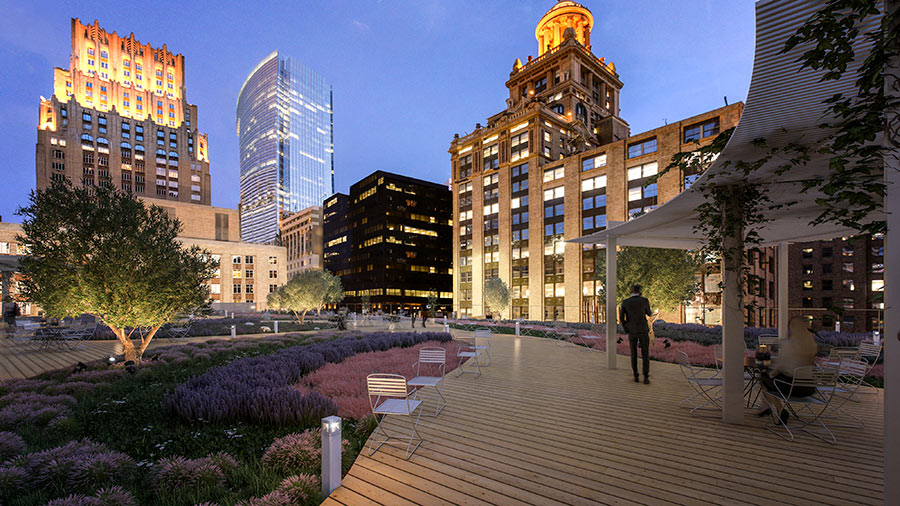
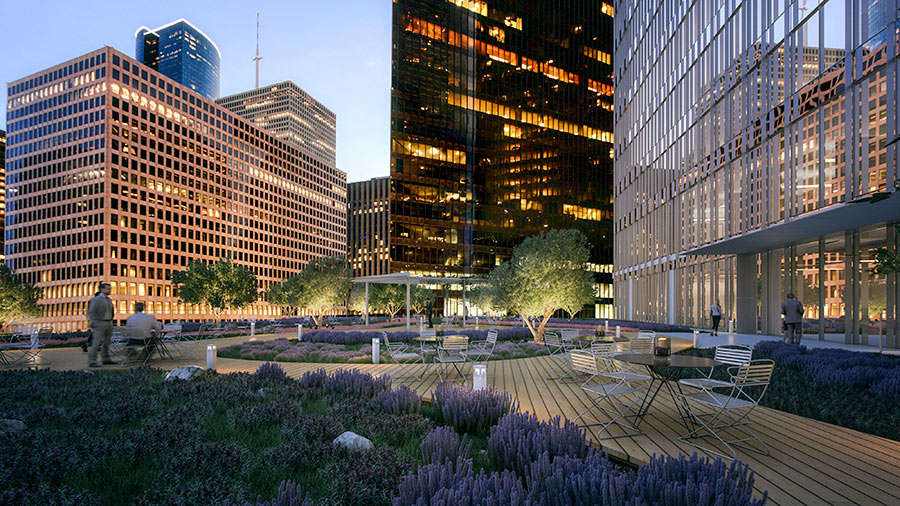
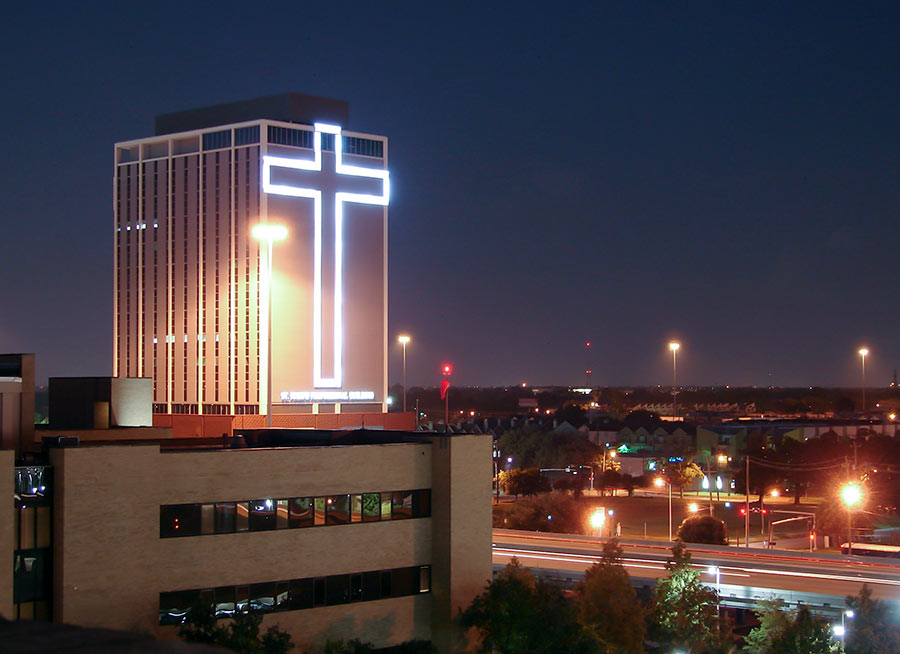 What’s going to replace the giant crosses on the east and west sides of the St. Joseph Professional Building towering over the Pierce Elevated once
What’s going to replace the giant crosses on the east and west sides of the St. Joseph Professional Building towering over the Pierce Elevated once 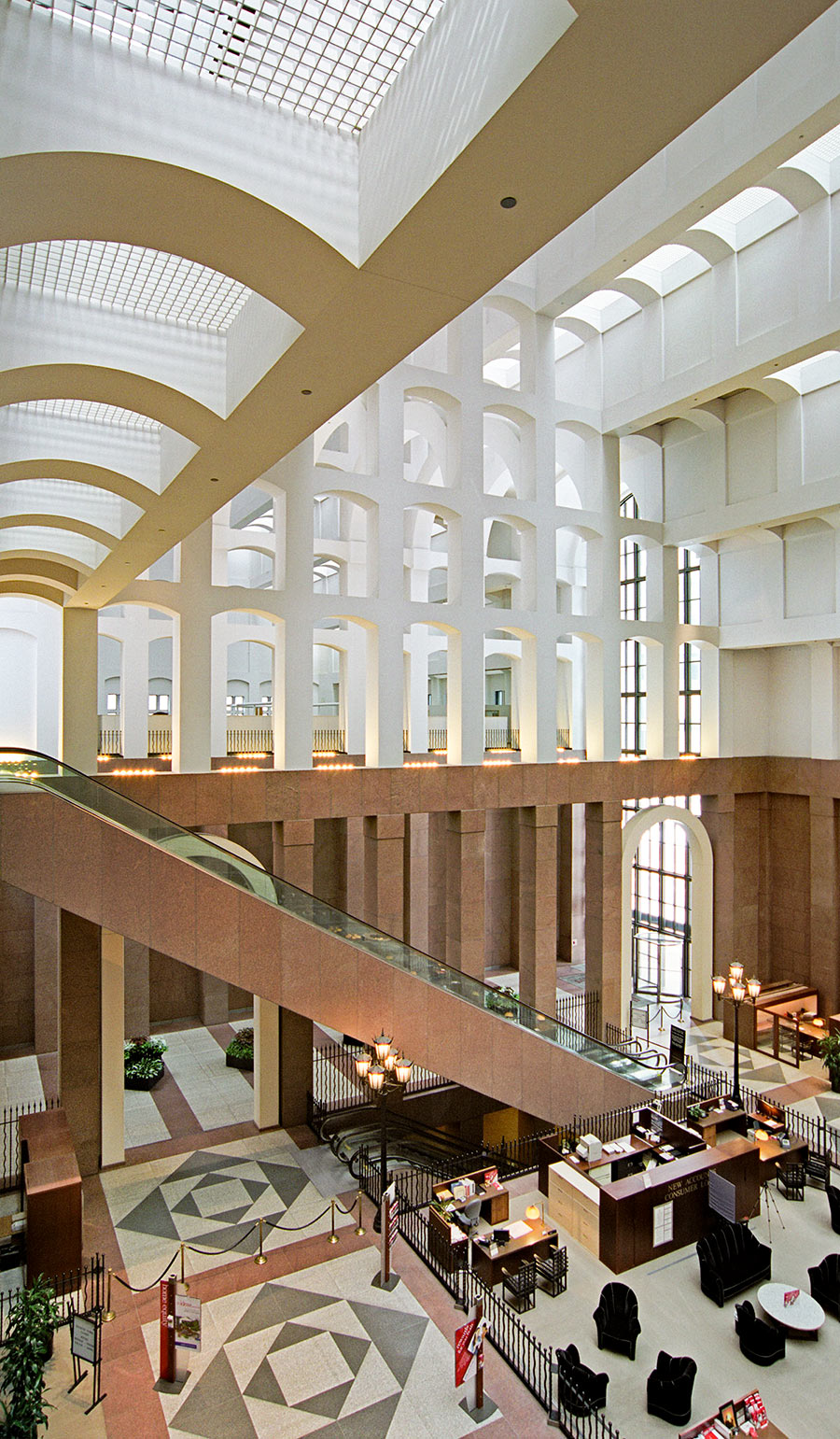 “. . . Soon after I moved to Houston, I had money wired to me at this Western Union building (this would have been November of ’81). Didn’t make much of an impression on me. I think the façade had been stripped off, and the office itself was shabby.
I started work at HL&P in February of ’82, and our offices looked directly across the street to the construction site. The ‘big pour’ for the concrete foundation slab was quite an event. Starting very early on a Sunday morning, a seemingly endless parade of mixer trucks crept down Louisiana Street. Obviously, most of the block had been excavated, and the lot where Western Union sat (well, sits) was supported by a series of diagonal beams. After seeing the engineering required to save that lot, the lower ‘banking hall’ design for that side of the building makes sense.
While construction continued, the south side of the WU was given a fresh coat of paint with a large graphic proclaiming ‘A Gerald R. Hines Project‘ (or some such thing), which doubtlessly is still there, virtually unseen for 35 years.” [
“. . . Soon after I moved to Houston, I had money wired to me at this Western Union building (this would have been November of ’81). Didn’t make much of an impression on me. I think the façade had been stripped off, and the office itself was shabby.
I started work at HL&P in February of ’82, and our offices looked directly across the street to the construction site. The ‘big pour’ for the concrete foundation slab was quite an event. Starting very early on a Sunday morning, a seemingly endless parade of mixer trucks crept down Louisiana Street. Obviously, most of the block had been excavated, and the lot where Western Union sat (well, sits) was supported by a series of diagonal beams. After seeing the engineering required to save that lot, the lower ‘banking hall’ design for that side of the building makes sense.
While construction continued, the south side of the WU was given a fresh coat of paint with a large graphic proclaiming ‘A Gerald R. Hines Project‘ (or some such thing), which doubtlessly is still there, virtually unseen for 35 years.” [

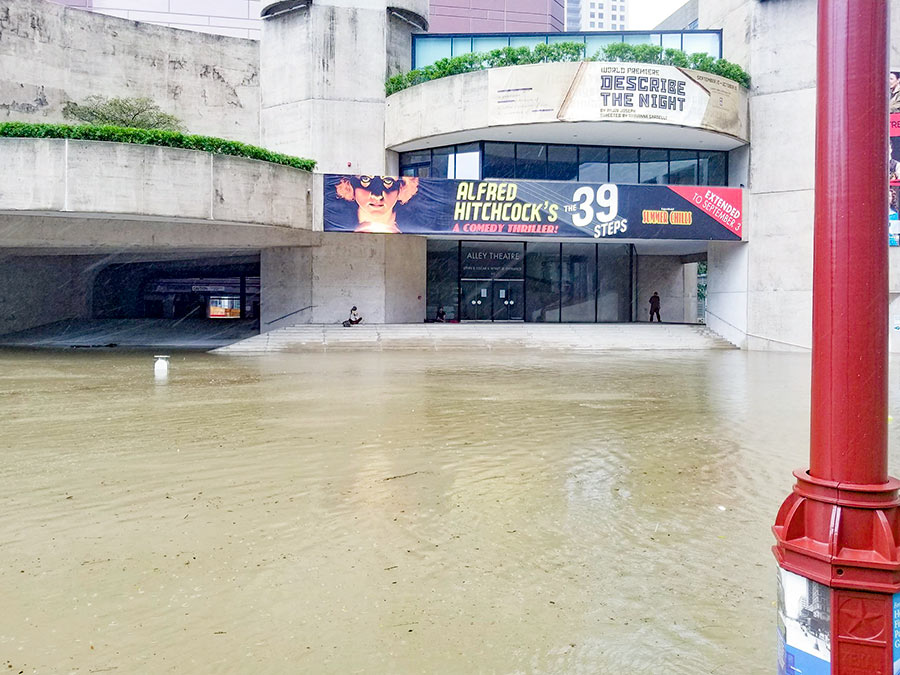 Harvey flooding caused an estimated $15 million of damage to the Alley Theatre’s basement-level stage, lobby, and dressing rooms, but for the most part spared its
Harvey flooding caused an estimated $15 million of damage to the Alley Theatre’s basement-level stage, lobby, and dressing rooms, but for the most part spared its